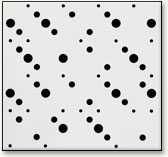Task 1
Introduction to Museum, Gallery & Heritage
What is Museum?
A building in which objects of historical, scientific, artistic, or cultural interest are stored and exhibited.
A Museum is a non-permanent institution in the service of society and its development, open to the public, which acquires, conserves, researches, communicates and
exhibits the tangible and intangible heritage of humanity and its environment for the purpose of education , study and enjoyment.
What is Gallery?
_ A cultural institution
_ A way of displaying and exhibiting art
_ It frames our experience of art-shaped by the architecture, design of the exhibition, curators and curatorial text.
_ A place of commercial transaction for art
_ A place that assigns value to art, either monetary or cultural value.
What is Heritage?
Heritage is the full range of our inherited traditions, monuments, objects, and culture. Most important, it is the range of contemporary activities, meanings, and behaviors that we draw from them.
Heritage includes, but is much more than preserving, excavating, displaying, or restoring a collection of old things. It is both tangible and intangible, in the sense that ideas and memories--of songs, recipes, language, dances, and many other elements of who we are and how we identify ourselves--are as important as historical buildings and archaeological sites.
Heritage is, or should be, the subject of active public reflection, debate, and discussion. What is worth saving? What can we, or should we, forget? What memories can we enjoy, regret, or learn from? Who owns "The Past" and who is entitled to speak for past generations? Active public discussion about material and intangible heritage--of individuals, groups, communities, and nations--is a valuable facet of public life in our multicultural world.
Heritage is a contemporary activity with far-reaching effects. It can be an element of far-sighted urban and regional planning. It can be the platform for political recognition, a medium for intercultural dialogue, a means of ethical reflection, and the potential basis for local economic development. It is simultaneously local and particular, global and shared.Heritage is an essential part of the present we live in--and of the future we will build.
Short meaning of Museum, Gallery, Heritage
Gallery, Curator & Artwork
Curator
With the key goals of informing, educating and inspiring the public, a museum or gallery curator acquires, cares for, develops, displays and interprets a collection of artifacts or works of art.
It can be a varied job. As well as responsibility for a particular collection, it can often include other activities, such as public relations, marketing, fundraising and education programmers. There can be an overlap with the museum/gallery exhibitions officer role. Curators are also expected to prepare budgets, manage staff and build relationships with both internal and external partners and stakeholders.
It's becoming common for museums, galleries, heritage and tourism attractions to develop collaborative relationships and share collections, as well as their expertise.
It's essential to construct innovative and creative exhibitions that appeal to a wide cross-section of the general public.
Whatever the size of their workplace, a museum or gallery curator's job is likely to include:
- responsibility for a collection of artifacts or works of art;
- acquiring objects or collections of interest to the museum/gallery;
- cataloging acquisitions and keeping records;
- carrying out background research and writing catalogs;
- displaying objects or collections in way that makes them accessible and engaging to the general public;
- writing materials and articles for the website;
- writing articles for internal and external publications;
- planning, organizing, interpreting and presenting exhibitions and lectures;
- collection documentation and management;
- collaborating with other museum departments, such as education, fundraising, marketing and conservation;
- writing bids;
- negotiating loan items and external loans and the accompanying funding;
- handling enquirers from researchers and the public;
- dealing with and understanding computer-generated imagery and website software as part of enhancing the visitor experience and interaction;
- budget planning, forecasting and reporting;
- staff management, recruitment, annual appraisals and disciplinary matters;
- staff training, promotion and development;
- dealing with enquirers from clients and stakeholders;
- liaising with voluntary groups, the community and industry (including schools, local history and other community groups), as well as grant agencies to secure sponsorship for events, publications and development projects;
- liaising with management boards, governors, trustees and local council and political groups to secure the future of the museum;
- networking with other museum and art gallery professionals and outside agencies.
http://www.prospects.ac.uk/museum_gallery_curator_job_description.htm
Proforma for Photograph / Visual Recording
Task 2
Object exploration : Circuit of Culture
Our Group Work
Food of Mantin
For this task went to Mantin Town did research about Mantin's famous foods. There are Chicken Rice, Black tea and toasted bread. We interview peoples at the shop and take some photos with them and take some notes. After that me and my group members planed to display the images on the wall as collage. Then start worked for it with a group.





























































